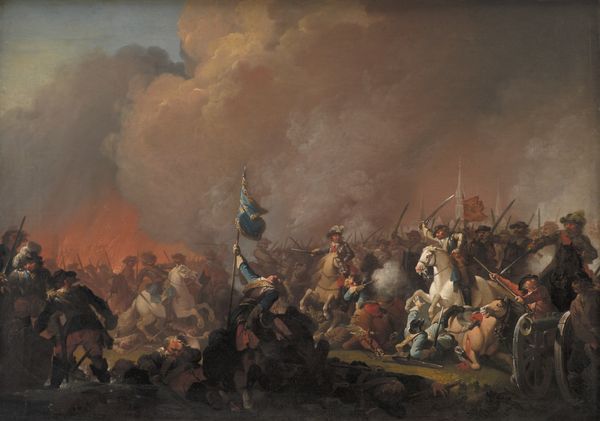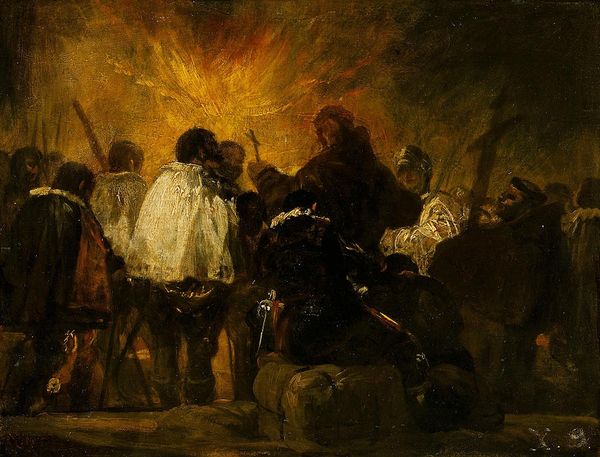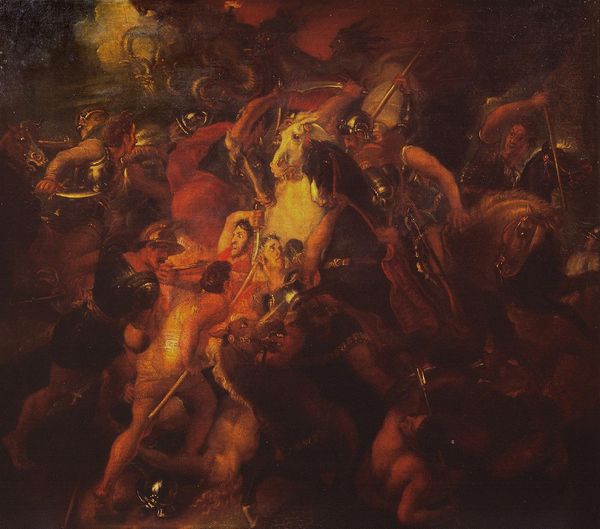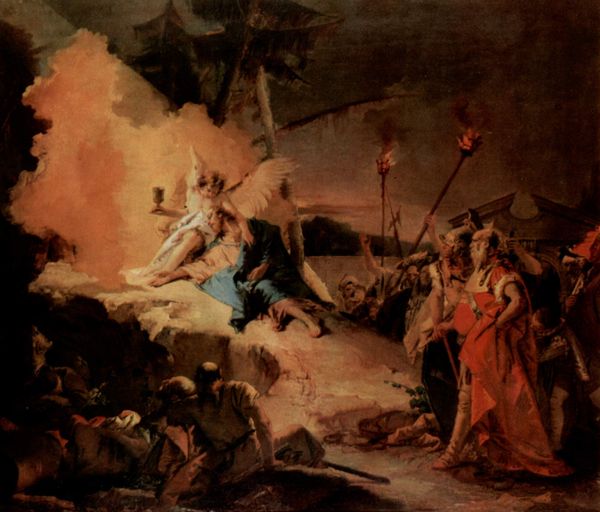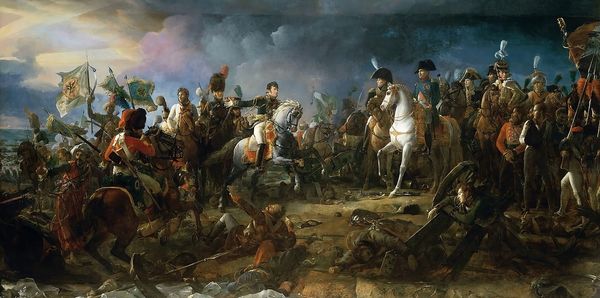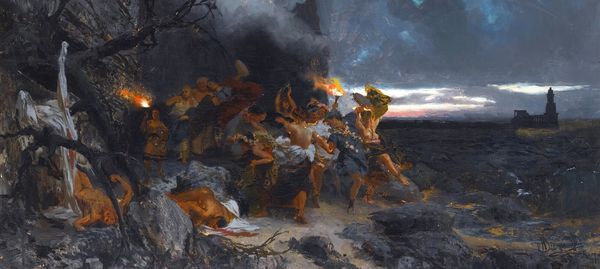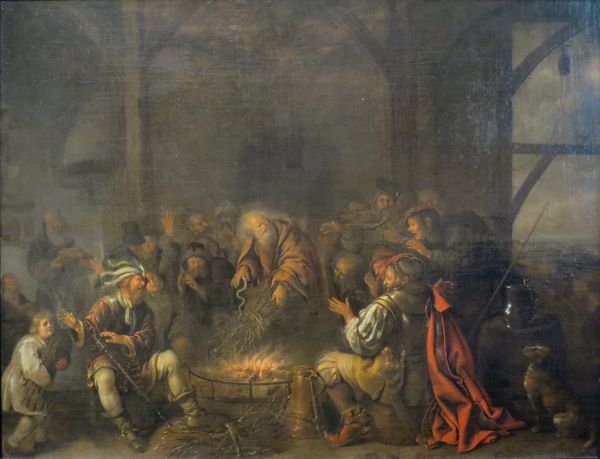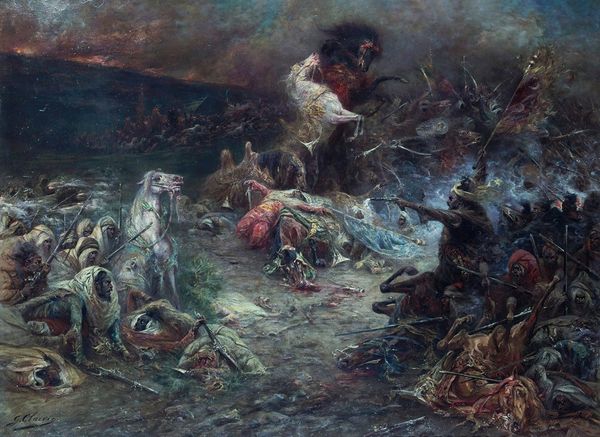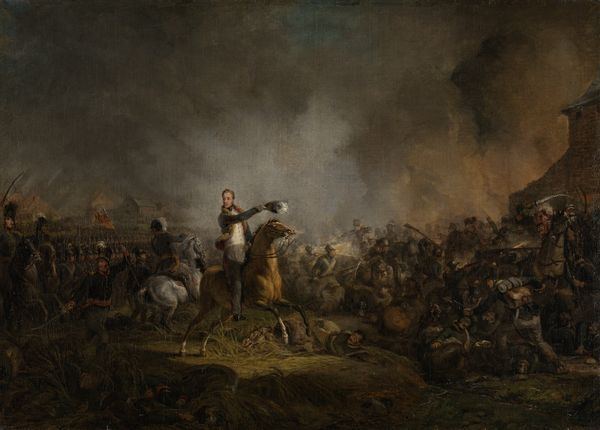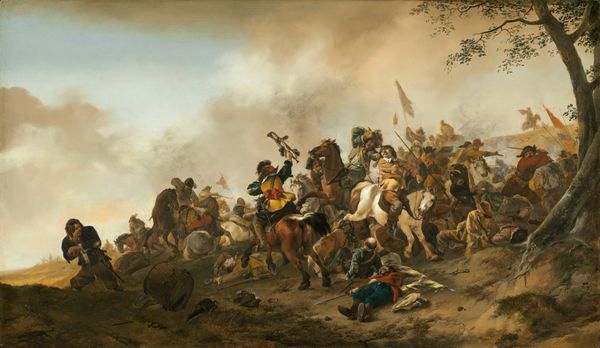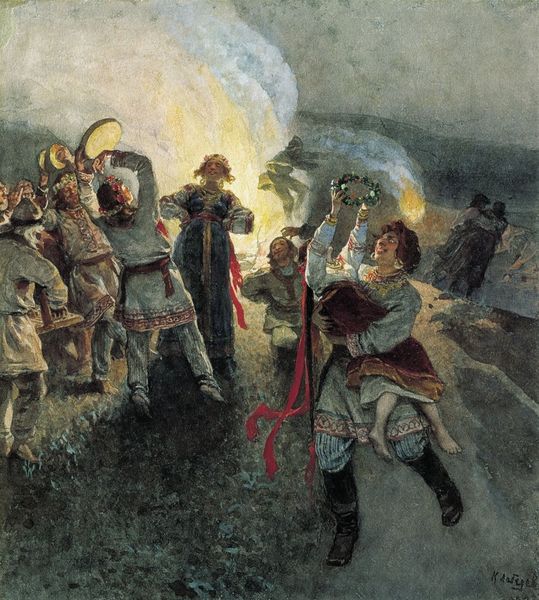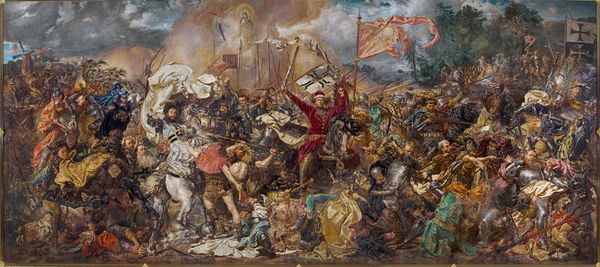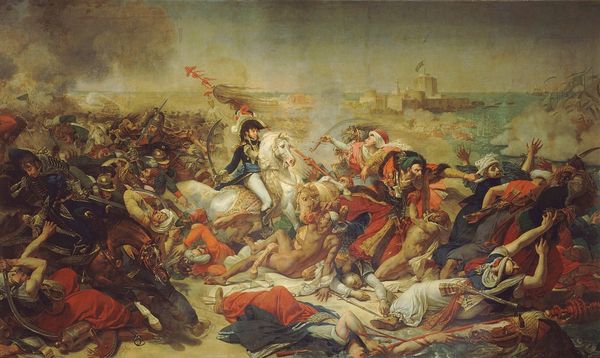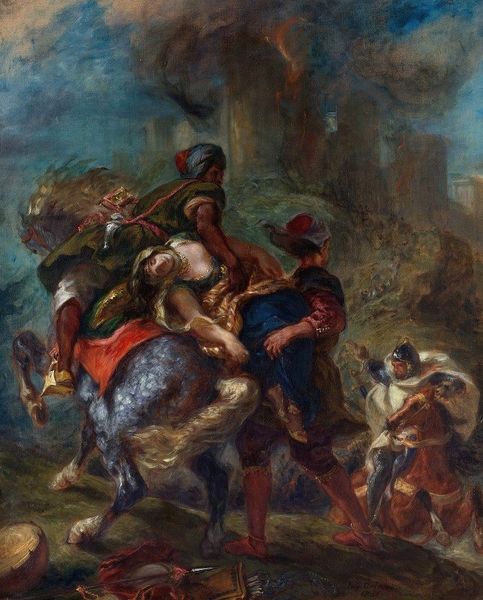
painting, oil-paint
#
narrative-art
#
painting
#
oil-paint
#
war
#
landscape
#
figuration
#
group-portraits
#
romanticism
#
history-painting
Copyright: Public domain
Curator: This is a depiction of "Warriors in the Battle of Silistria," a historical scene rendered in oil paint, brought to us by Henryk Siemiradzki. What strikes you first about this turbulent composition? Editor: Chaos, frankly. The painting presents a macabre landscape—bodies strewn everywhere, a cold moon offering little comfort. It is viscerally unsettling. I see bodies upon bodies... it screams of dehumanization through conflict. Curator: Siemiradzki was, if nothing else, skilled at conjuring emotional states through imagery. Think about how the symbolism of darkness versus light, the moon providing dim illumination against the horrors unfolding below, functions. Editor: Absolutely, and that use of light is really strategic in highlighting the brutal intimacy of the battle, bringing some individuals into sharp focus. We're forced to confront the carnage, while others are left shrouded in the shadowy background as mere context. Curator: Note also the almost casual integration of classical forms within the chaos. Are we meant to see this violence through the lens of some kind of historical precedent? Or, consider what this representation communicates about the enduring nature of conflict. Editor: Exactly, I think it certainly points to the historical romanticism movement of that time and to the broader narratives it perpetuated about heroism and sacrifice. We have to wonder about whose narratives get prioritized and amplified when creating such paintings. It begs a contemporary reading about power, nationalism, and the way historical events are curated through an aesthetic, often glorifying lenses. Curator: Yes, and on that subject, think about the bodies themselves, contorted, vulnerable—the visual emphasis given to these casualties is interesting, a powerful motif that runs through war imagery across epochs, across artistic and cultural interpretations. Editor: True, and it’s precisely through such symbolic continuities that art helps us excavate meaning and unpack complex intersections between aesthetics, politics, and the lived experiences of historical trauma. Thanks for this perspective. Curator: My pleasure. The exploration into history has given me fresh insights, too.
Comments
No comments
Be the first to comment and join the conversation on the ultimate creative platform.
